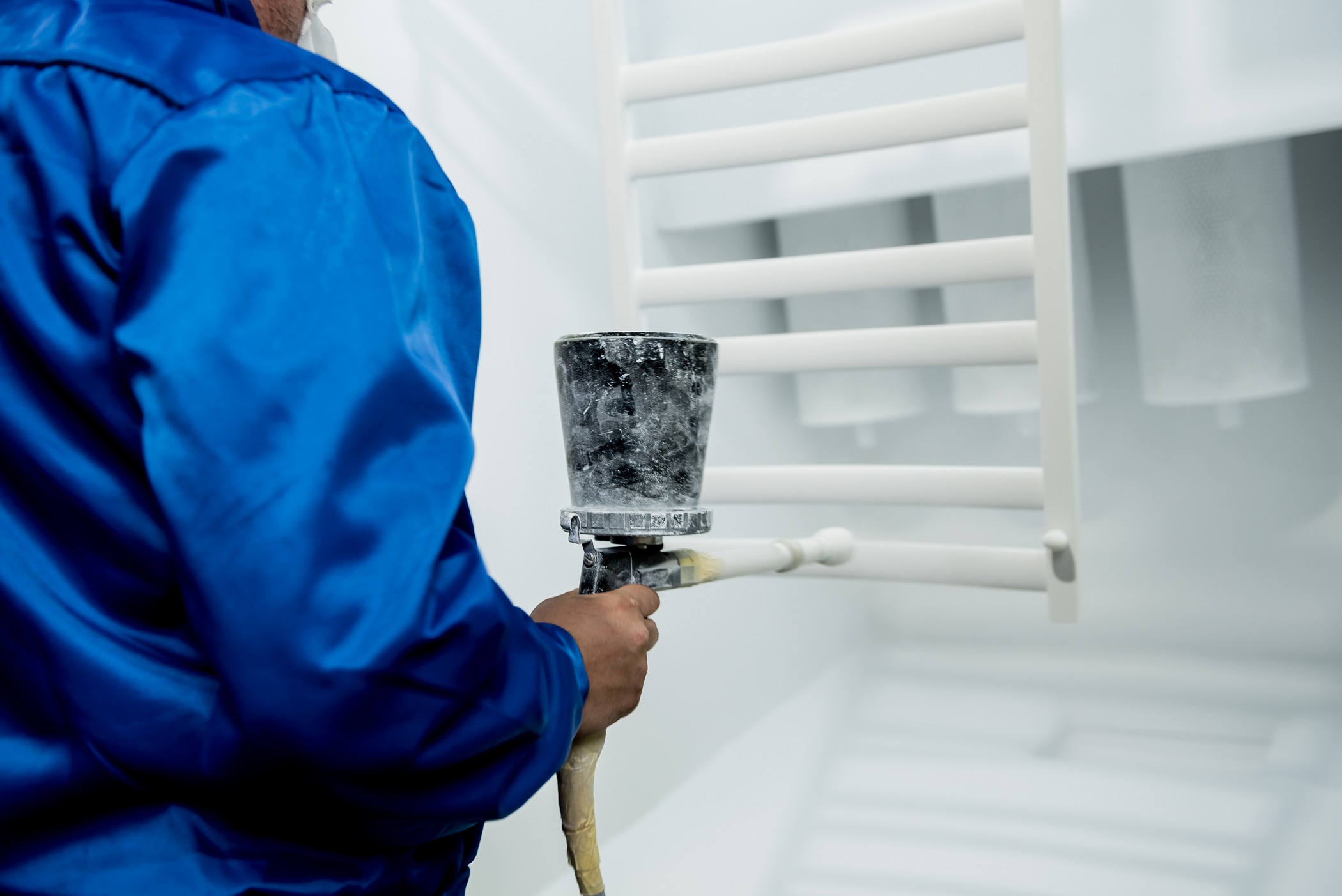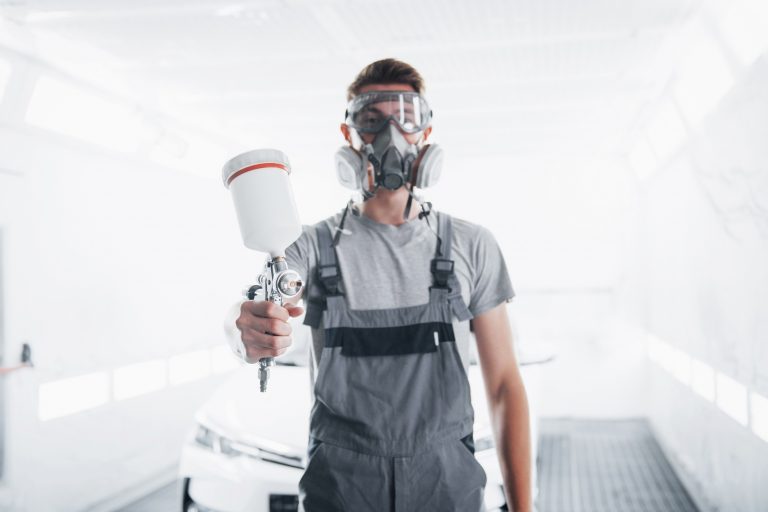
Home>>Blog>>Main Blog
Powder coating is a complex process and the question that may come to your mind is whether to pre-treat the or not to pre-treat the concerned object. Do not worry. This article attempts to answer in brief the story of both sides.
When it comes to Pre-treatment, we need to have prior knowledge of powder coating. Powder coating is an advanced method of applying a decorative and protective finish to a wide range of materials and products used by both industries and consumers.
The powder used for the process is a mixture of finely ground particles of pigment and resin, sprayed onto a coated surface. The charged powder particles adhere to the electrically grounded surfaces until heated and fused into a smooth coating in a curing oven. The result is a uniform, durable, high-quality, and attractive finish.

When an article for powder coating is immersed in our Pre-treatment tanks, a chemical reaction converts the surface layer into an integral and flexible non-metallic barrier. This chemically altered layer adheres strongly to the item’s surface to provide an effective key for the finished powder-coated product. The layer is designed to inhibit the start and spread of corrosion, whether exposure to the risk occurs before or after the powder coat is applied.
Powder Coating Services has extensive on-site Pre-treatment facilities suitable to process a range of metals in sheet, tubular, and entirely manufactured form. Large frames and product forms are accommodated using a recommended spray poly-etching process suitable for metal products, including galvanized steel, ferrous and non-ferrous metals.
Over our many years of experience in the business, we have collected large amounts of data on powder-coated product performance from the field, with documented in-house and laboratory testing. We are in close and constant communication with our Pre-treatment material suppliers, staying up to date with industry trends to deliver the latest, most appropriate powder coating preparation methods and processes.
The first and most crucial stage in the spray washer is the cleaner stage. If the part is not completely cleaned while passing through this stage, the quality of the finished piece will suffer. The cleaners are alkaline and contain surfactants to lower surface tension. Spray pressure is vital in effective cleaning.
The highest pressure, without blowing the parts off the hanger, is usually the most desirable. Cleaner solution concentration and temperature must be carefully controlled. Planned dump cycles must be implemented to ensure that soils are not re-deposited on the surface of the parts. Normal design dwell time in the cleaner stage is 90 seconds.
If line speeds have been changed, the chemical supplier should be consulted for recommended changes in solution concentration and temperature. Between each stage is a drain zone. The drain zone should be long enough to keep solutions from being carried from one stage to the next but short enough that the parts do not dry between stages.

After cleaning, comes to the rinsing stage.
Getting rid of all of that dirt, grime, and likely the occasional dead bug is essential, but so is removing the remnants of whatever chemical you used to clean the surface. This is key to keeping the coatings uncontaminated.
While these rinses can be done with plain city tap water, Reverse Osmosis (RO) or de-ionized (DI) rinses is preferred. This means water that has been treated, removing fluorides, chlorides, and all the other stuff added to water these days, that are essentially chemicals that we don’t need getting involved in the coating process.
Preparing the surface to accept the product for the best results possible requires some conditioning agent. Essentially, the conditioner is applied, sets the surface to a certain pH level, and locks that pH level. Doing this creates a surface that is ready to accept the next layer of preparation.
Two generic phosphates widely used in powder paint finishing systems are iron phosphate and zinc phosphate. From both the equipment and chemical standpoint, iron phosphates are more economical.
They are easier to control and have fewer maintenance requirements. A detergent iron phosphate product is available that requires only three stages. This system is used in some powder finishing systems; however, it is not recommended where a high-quality end product is required. The ultimate performance of the final product, cost, and end-use must be balanced to determine the phosphate to use.
The passivation of the phosphate surface with a “chromic acid” solution is a very important step in improving the overall performance of the paint film. Salt spray resistance is strongly affected by this step. PH control in this stage is required.
The chromic rinse serves the following purposes:
1. Dissolves any trace of water-soluble salts in the pores of the phosphate coating or converts them to water-insoluble salts.
2. Trace amounts of soluble chromate are left on the surface, which effectively improves salt spray resistance.
3. It forms a thin passive oxide film in the pores of the phosphate.
It is essential to follow the chemical supplier’s recommendations concerning dumping and recharging of this stage.
The time and temperature of the dry-off oven are dependent upon the Pre-treatment and part shape. With iron phosphate, the requirement of changing the crystal structure is added. The desired crystal dehydration improves corrosion resistance.
Usually, a metal temperature of 350°F for five minutes is sufficient to cause dehydration. With both iron and zinc phosphate, metal temperatures about 400°F and long oven times should be avoided as they can cause deterioration of Pre-treatment.
Parts exiting the dry-off oven should be completely dry and exhibit a uniform surface appearance. The presence of any streaks, splotches, or bare areas is a sure indication of problems in the system. Issues of this type will cause poor durability of the part to be painted. This is true even though the powder coating may completely hide these deposits under the paint film. The chemical supplier is the best source of help when these problems are present.
1. To prepare the substrate to accept a coating properly- The Pre-treatment, as seen, has many steps of each with its significance, as the material is passed through the steps, it makes the material more likely to get powder coated well.
2. To keep it in top nick for as long as possible- With the Pre-treatment done on the material, the material is more likely to get coated here, hence the material looks more appealing, and the coating will not wear off, keeping the material on top nick condition for a longer time.
3. To prevent corrosion, Pre-treatment ensures that the material is well treated and is not affected by corrosion.
4. To wash away all manner of dirt and bug guts- If the Pre-treatment step is missed, it becomes challenging for the material to get coated and have an uneven finish due to the dust or any external material present surface.
5. To impart under-paint corrosion, thereby improving the lives of the powder coating– As the material is treated beforehand, it makes it durable for powder coating and helps the powder coating last long.




All Rights Reserved @ 2020 – 2021